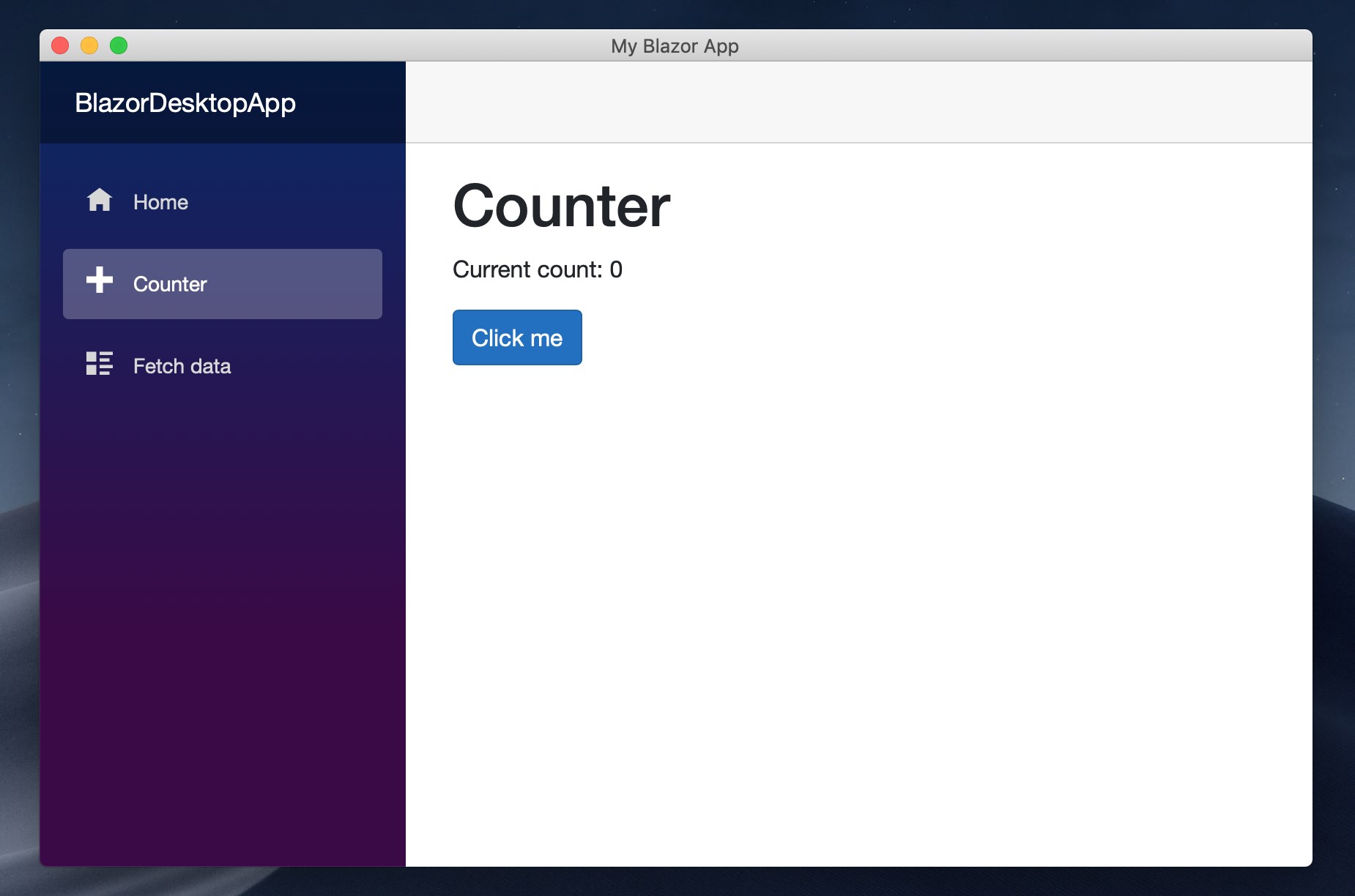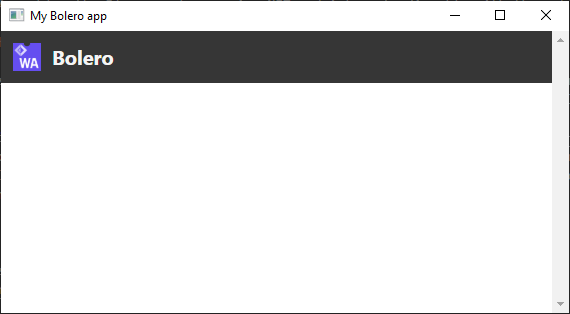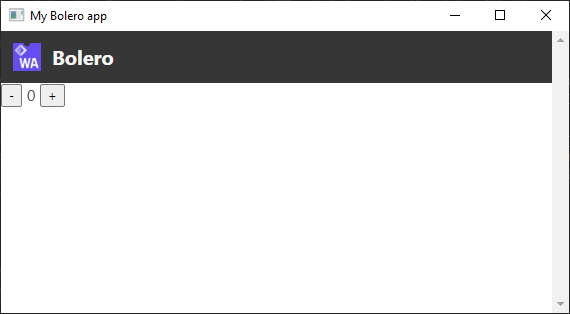Managing page-specific models in Elmish
This article is part of F# Advent Calendar 2019.
GUI applications (web or otherwise) often display their content in one of a number of pages. You can have a login page, a dashboard page, a details page for a type of item, and so on. Whichever page is currently displayed generally has some state (or model, in Elmish parlance) that only makes sense for this page, and can be dropped when switching to a different page. In this article we'll look into a few ways that such a page-specific model can be represented in an Elmish application. The code uses Bolero, but the ideas can apply to any Elmish-based framework, like Fable-Elmish or Fabulous.
Our running example will be a simple book collection app with two pages: a list of books with a text input to filter the books by title, and a book details page.
type Page =
| List
| Book of isbn: string
type Book =
{ isbn: string // We use the ISBN as unique identifier
title: string
publishDate: DateTime
author: string }
Note that there can also be some state which, although only used by one page, should be stored in the main model anyway because it needs to persist between page switches. For example, in our application, we don't want to reload the list of all book summaries whenever we switch back to the List page, so we will always store it in the main model.
Page model in the main model
One way to go is to just store each page's model as a field of the main application model. However, we quickly encounter a problem: the state for all pages needs to be initialized from the beginning, not just the initial page.
type ListPageModel =
{ filter: string }
type BookPageModel = Book
type Model =
{ page: Page
books: Book list
list: ListPageModel
book: BookPageModel }
let initialModel =
{ page = List
books = []
list = { filter = "" }
book = ??? // What should we put here?
}
We can of course use an option:
type Model =
{ // We don't need to store the page anymore,
// since that is determined by which model is Some.
// page: Page
books: Book list
list: ListPageModel option
book: BookPageModel option }
let initialModel =
{ books = []
list = Some { filter = "" }
book = None }
But this violates a principle that I would rather keep true: illegal states should be unrepresentable.
What this means is that it is possible to put the application in a nonsensical state, where the page is Book but the book is None.
Our update and view functions will have to deal with this using partial functions (ie. functions that aren't correct for all possible input values, and throw exceptions otherwise) such as Option.get.
type BookMsg =
| SetAuthor of string
// ...
type Msg =
| Goto of Page
| ListMsg of ListMsg
| BookMsg of BookMsg
// ...
let update msg model =
match msg with
| BookMsg bookMsg ->
let bookModel = Option.get model.book // !!!!
let bookModel, cmd = updateBook bookMsg bookModel
{ model with book = Some bookModel }, Cmd.map BookMsg cmd
// ...
let view model dispatch =
match model.page with
| Book isbn ->
let bookModel = Option.get model.book // !!!!
bookView bookModel (dispatch << BookMsg)
// ...
Additionally, when switching pages, in addition to initializing the state of the new page, we may need to make sure that we set the model of other pages to None.
In this particular example, each model is very light, so it doesn't really matter; but if there are many different pages and some of their models are large in memory, this can become a concern.
let update msg model =
match msg with
| Goto List ->
{ model with
list = Some { filter = "" }
book = None // Don't forget this!
}, Cmd.none
| Goto (Book isbn) ->
match model.books |> List.tryFind (fun book -> book.isbn = isbn) with
| Some book ->
{ model with
list = None // Don't forget this!
book = Some book
}, Cmd.none
| None ->
model, Cmd.ofMsg (Error ("Unknown book: " + isbn))
// ...
Despite these inconvenients, this style is a good choice for an application whose page are organized in a stack, where each page is only accessed directly from a parent page. Actually, the fact that the model can contain several page states becomes an advantage when doing page transition animations, since during the animation, two pages are in fact displayed on the screen. In particular, this is quite common for mobile applications. Because of this, it is a recommended style in Fabulous, as shown by the sample application FabulousContacts.
Page model in a union
Separate page union and page model union
An alternative is to store the page model as a union, with one case per page just like the Page union, but with models as arguments.
type PageModel =
| List of ListPageModel
| Book of BookPageModel
type Model =
{ page: PageModel
books: Book list }
let initialModel =
{ page = PageModel.List { filter = "" }
books = [] }
The model is now correct by construction: it is not possible to accidentally construct an inconsistent state.
Unfortunately the types still allow receiving eg. a BookMsg when the current page is not Book; but such messages can just be ignored.
A nice way to do this is to match on the message and the page together:
let update msg model =
match msg, model.page with
| ListMsg listMsg, List listModel ->
let listModel, cmd = updateList listMsg listModel
{ model with page = List listModel }, Cmd.map ListMsg cmd
| ListMsg _, _ -> model, Cmd.none // Ignore irrelevant message
| BookMsg bookMsg, Book bookModel ->
let bookModel, cmd = updateBook bookMsg bookModel
{ model with page = Book bookModel }, Cmd.map BookMsg cmd
| BookMsg _, _ -> model, Cmd.none // Ignore irrelevant message
// ...
Note: we could handle all irrelevant messages at once in a final | _ -> model, Cmd.none, but then we would lose the exhaustiveness check on msg.
So if later we add a message but forget to handle it, the compiler wouldn't warn us.
As before, when switching to a page, the initial model is decided in the update handler for the Goto message.
let update msg model =
match msg with
| Goto Page.List ->
let pageModel = PageModel.List { filter = "" }
{ model with page = pageModel }, Cmd.none
| Goto (Page.Book isbn) ->
match model.books |> List.tryFind (fun book -> book.isbn = isbn) with
| Some book ->
{ model with page = PageModel.Book book }, Cmd.none
| None ->
model, Cmd.ofMsg (Error ("Unknown book: " + isbn))
// ...
Bolero's PageModel<'T>
Bolero contains a facility to handle such a page model style. It is essentially the same as the previous style, with some internal magic to avoid the need for a separate union type while still playing nice with Bolero's automatic URL routing system.
Separate Elmish program
Finally, I have recently been experimenting with a way to sidestep the whole question of how to embed the messages and models of pages into the main message and model entirely: make each page a separate Elmish program.
This is a style that I haven't seen used in Fable or Fabulous, and in fact I have no idea whether it is possible to use it in those frameworks. In Bolero, while it is still buggy and requires changes to the library itself, I hope to be able to make it available soon.
The idea is that we will have a root Program that will contain the common model (here, the list of books) and dispatch page switches to a nested ProgramComponent.
Each page is a different ProgramComponent, with its own model and message types.
Of course, each page still needs to be able to receive a model from the parent program (the list of books for List, and the book as initial model for Book), and to dispatch messages to the main update.
These two values can be passed to the component as Blazor parameters.
This is the base type that will be implemented by our page components:
[<AbstractClass>]
type NestedProgramComponent<'inModel, 'rootMsg, 'model, 'msg>() =
inherit ProgramComponent<'model, 'msg>()
let mutable oldInModel = Unchecked.defaultof<'inModel>
[<Parameter>]
member val InModel = oldInModel with get, set
[<Parameter>]
member val RootDispatch = Unchecked.defaultof<Dispatch<'rootMsg>> with get, set
override this.OnParametersSet() =
if not <| obj.ReferenceEquals (oldInModel, this.InModel) then
oldInModel <- this.InModel
this.Rerender()
For example, the Book component is implemented as follows:
type BookComponent() as this =
inherit NestedProgramComponent<BookModel, Msg, BookModel, BookMsg>()
let update message model =
// Use this.RootDispatch to send messages to the root program
// ...
let view model dispatch =
// ...
override this.Program =
Program.mkProgram (fun _ -> this.InModel, Cmd.none) update view
and with a convenience function to instantiate nested program components:
module Html =
open Bolero.Html
let ncomp<'T, 'inModel, 'rootMsg, 'model, 'msg
when 'T :> NestedProgramComponent<'inModel, 'rootMsg, 'model, 'msg>>
(inModel: 'inModel) (rootDispatch: Dispatch<'rootMsg>) =
comp<'T> ["InModel" => inModel; "RootDispatch" => rootDispatch] []
we can include the appropriate page component inside the main view:
let view model dispatch =
cond model.page <| function
| List ->
ncomp<ListComponent,_,_,_,_> model.books dispatch
| Book isbn ->
cond (model.books |> List.tryFind (fun book -> book.isbn = isbn)) <| function
| Some book ->
ncomp<BookComponent,_,_,_,_> book dispatch
| None ->
textf "Unknown book: %s" isbn
Conclusion
The above approaches each have their advantages and inconvenients. They can even be mixed and matched, depending on how persistent different pages' models needs to be across page switches. Don't be afraid to experiment!
By Loïc "Tarmil" Denuzière on Tuesday, December 17, 2019


